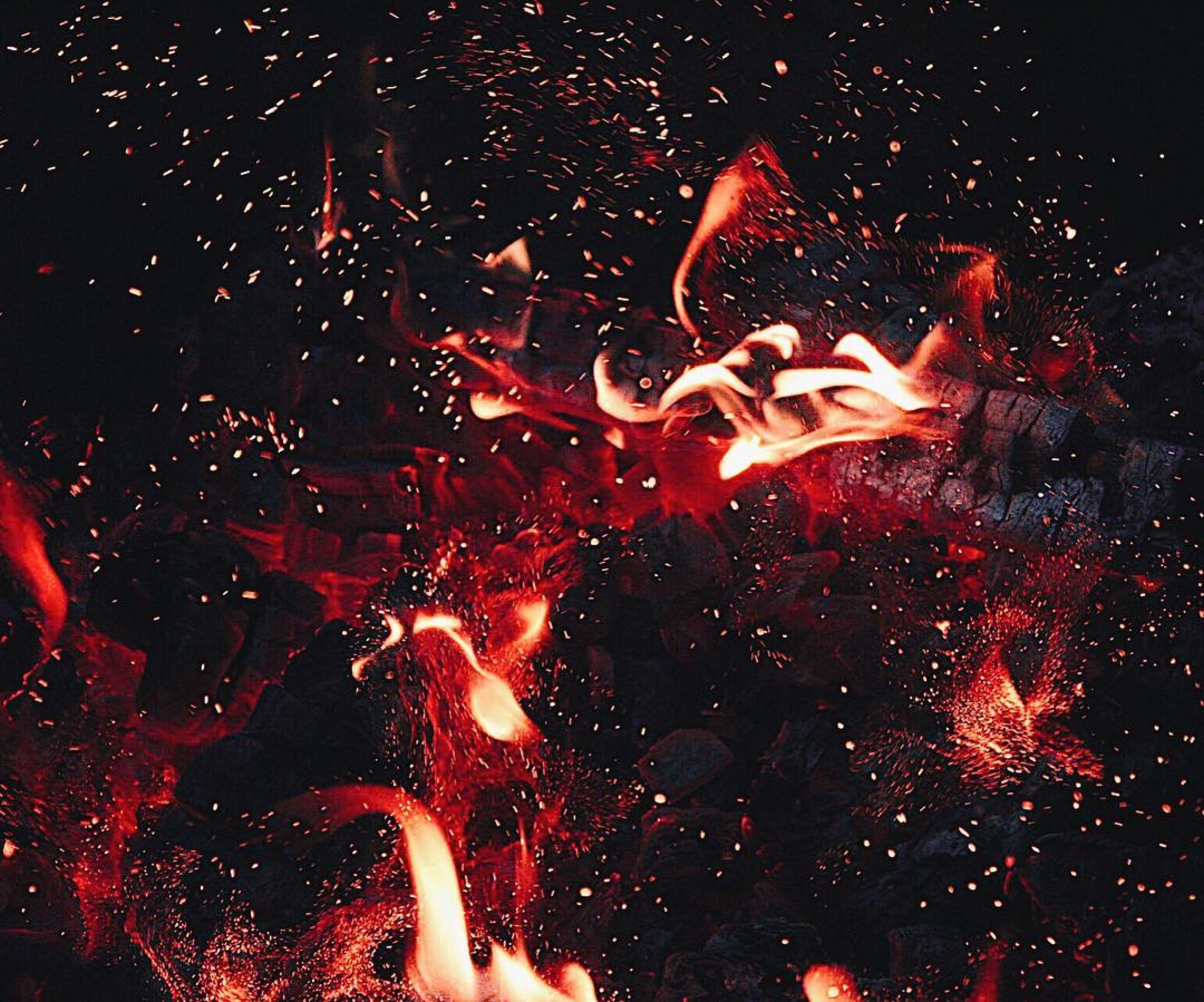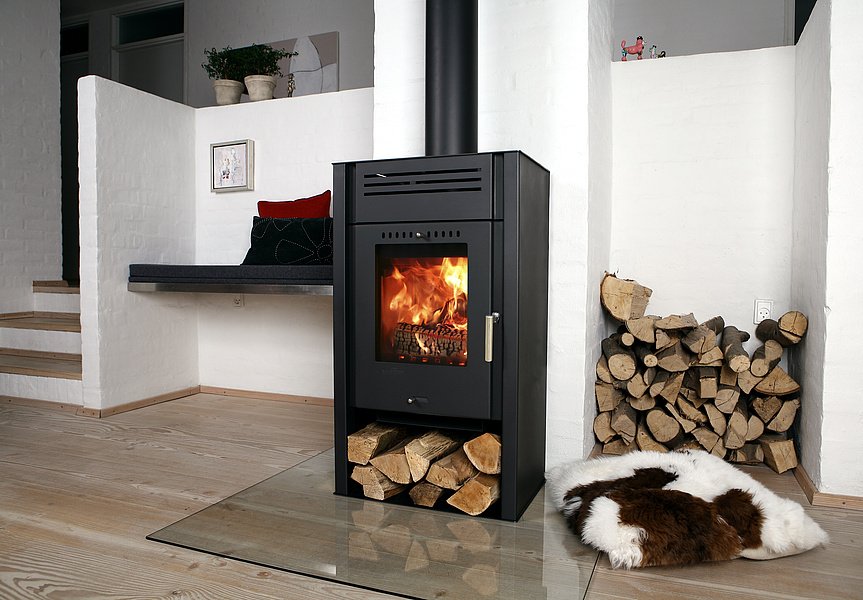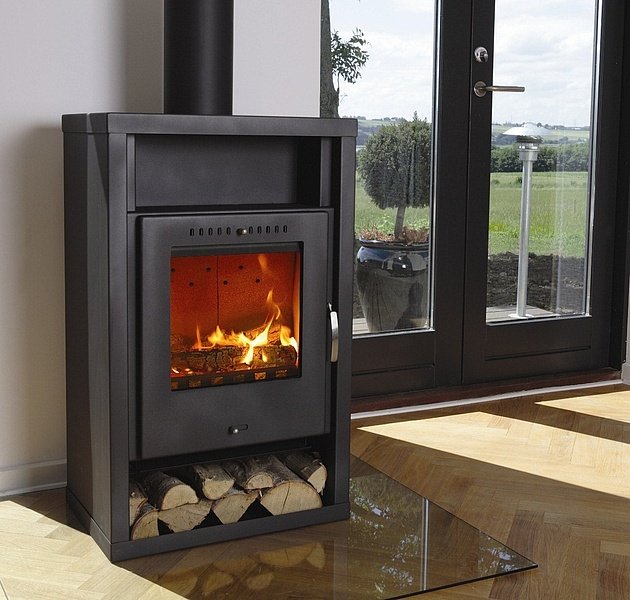4 Practical Tips in Selecting the Right Wood-Burning Stove
Now that the Christmas season is fast approaching, you might make it a point to come prepared for the winter. Apart from setting the tree, decorating your home, and making your living space cosy, you also need to invest in a stove. This heating appliance serves to warm your home and make it a comfortable place to get by during the cold season.
There are various types of appliances available in today’s market. When it comes to this, you typically have the option to choose between a wood-burning or multi-fuel stove. While the former is designed to only burn woods, the latter can burn other types of solid fuels like coal and briquettes.

If you want to make the right purchase decision, here are four practical tips to help you make the most out of your stove and save money in the long run:
1. Choose from a variety of fuel and stove options
As mentioned above, there are many types of appliances available in the market in terms of shapes and sizes, and fuel uses and applications. As you’re looking through the available option, you need to consider the model that fits the area in your home where you plan to install it. If you have logs readily available and want to save up in the long run, then a wood stove can be your best bet.
2. Be specific on the stove features you need
Apart from the models and fuel options, you have to factor in additional features that you may need in an appliance. For instance, you may want a model with a built-in fuel store, hotplate for cooking, cool-touch handles, rotational ability, and an air wash system to help keep the glass clean. Know exactly what you want and ask for some recommendations from the salesperson so that you’ll be able to make the right purchase decision.
3. Factor in the efficiency and correct wattage
A crucial aspect of your wood-burning stove is its overall efficiency. Logically, it’s best to invest in an appliance that offers the utmost efficiency. An efficient product will help you decrease your pollution levels and increase your burning effectiveness. Likewise, be sure to check the appliance wattage and get the right one for your home. Keep in mind that high wattage can waste energy while too low can compromise your home’s temperature.
4. Consider the pricing options and your budget
Seeing that you have many models to choose from, you need to get several quotations so that you have various pricing options. While you’re at it, check your overall budget and invest in an appliance that you can afford. However, remember to not sacrifice quality for affordability, and make sure to strike a balance between both. Ultimately, choosing a cost-effective wood-burning stove can provide your home needs while helping you save in the long run.
Conclusion
At this point, you now have four practical tips to guide you in selecting the right wood-burning stove for your house. As discussed, be sure to choose from various fuel and appliance options, factor in the needed features, check the efficiency and correct wattage, and consider the pricing and your budget. With all these factors in mind, you’ll be able to invest in the right model that’s cost-efficient and highly reliable for your household needs!
Are you looking for the right wood-burning appliance for your home needs? We’ve got you covered with our multi-fuel stoves and wood stoves in Scotland. If you need to choose from a variety of top brands and get proper stove installation, ask for a free quote by getting in touch with us today!
5 Practical Tips to Avoid Wood-Burning Mistakes: Our Guide
If you have a wood-burning stove or fireplace at home, you need to ensure that you’re setting and burning the fire correctly. Doing so will efficiently provide you and your household with the right fire and temperature while fostering the utmost safety at home. Unfortunately, while being able to produce fire may appear to be basic knowledge, some still tend to commit mistakes in burning woods. Not only will these delay the fire production and affect your heating needs, but these mistakes can also potentially compromise the safety of your family.
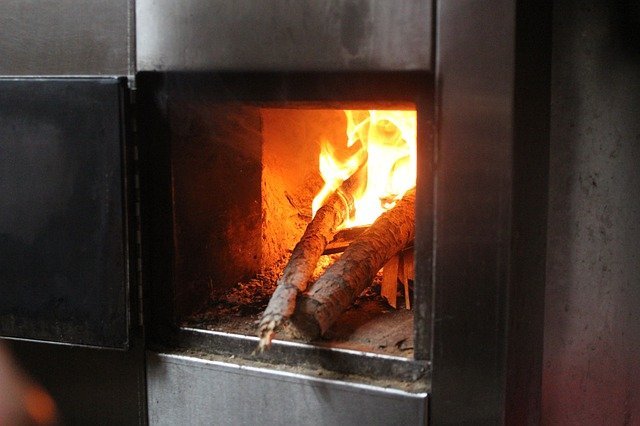
Fret not, as we’ve prepared a rundown of five practical ways to avoid wood-burning mistakes for your fireplace or wood stove:
5 Practical Tips to Avoid Wood-Burning Mistakes: Our Guide
1. Be sure the woods aren’t wet
This is self-explanatory—but yes, fire and water do not go together. Unfortunately, there are still people who aren’t mindful of the woods they’re using. The chances are that they are wet that won’t burn at all. Even if they do, they won’t produce the right flare and will create excess smoke that can become inconvenient. Be sure to use woods that are completely dry so that you can ensure an efficient fire for your wood stove or fireplace.
2. Use the right wood for the right fire
It’s worth knowing that there are certain types of wood that are appropriate for certain types of fire. Keep in mind that hardwood burns longer while softwood burns quicker, so you have to be wary of choosing the right wood to produce the flare you want to achieve. For your reference, hardwoods are oak, maple, beech and ash while softwoods include cedar, red pine and fir.
3. Start the fire properly with oxygen
Know that some can even make the mistake of setting the fire incorrectly. The chances are that they use lighter fluid, charcoal lighter, or any other accelerant to start the flare. If you want to set the fire the right way, in mind that oxygen is required to start and burn a fire. Here’s what you need to do: start the flare at the bottom, then add in thin logs, and finally in with the main logs. Be sure to also have ample air to allow your woods to breathe and set fire.
4. Address excess smoke
Keep in mind that a handful of factors may cause excess smoke. The excess may be attributed to unseasoned logs, wet woods, or some obstruction in the flue. It’s possible that there’s excess creosote accumulation in the flue. Also, there may be an obstruction in the airflow such as leaves, twigs or other debris, so be sure to avoid creosote buildup and get rid of any blockage.
5. Regulate the fire
It is also essential to know that there’s a proper way of controlling the fire in your wood stove. Here’s what you need to take note of:
- Don't overload the firebox.
- Don’t use charcoal in a fireplace – use wood logs instead.
- Don’t use accelerants like gasoline or lighter fluid – woods are best.
Conclusion
At this point, you now realise that the five tips discussed above are straightforward and simple to follow. As mentioned, be sure that the woods aren’t wet, use the right wood for the right fire, start the flare with oxygen, address excess smoke, and regulate the fire. By following all these steps, you will surely create safe, robust fires that will burn properly and last as expected.
We’re a family-run business with our burning passion for multi-fuel and wood stoves in Scotland. If you need a supply of top brands, including stove installation, get a free quote by getting in touch with us today!
4 Tips to Keep Your Wood Stove Ready for the Winter
Wood-burning stoves are a great way to supplement your central heating system in the winter. Aside from helping you cut energy costs, wood stoves also create a warm and cosy ambience, similar to traditional brick fireplaces.
Like your boiler, your wood stove will also need regular maintenance to keep it functioning properly. Over time, wood-burning stoves accumulate ash, and may even develop warping, cracks, and other signs of deterioration in the chimney.
To keep that from happening, here are four wood stove maintenance tips and tricks that will help ensure that your wood stove is ready to warm your house when you need it.
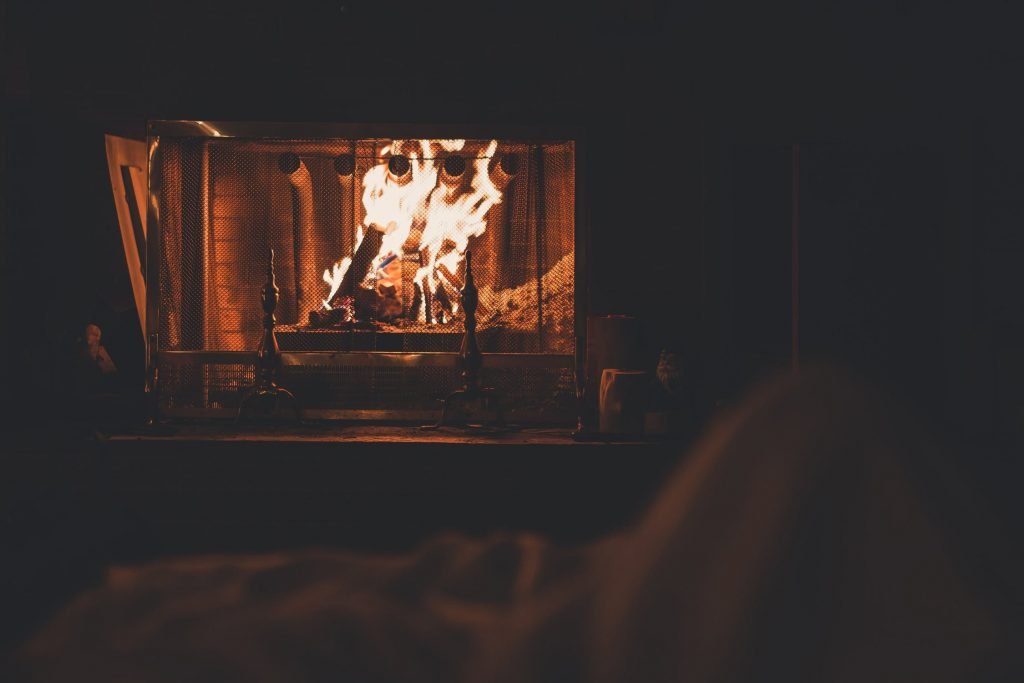
Use the right kind of fuel material
Other materials to avoid are treated wood, trash, artificials logs, or any product containing zinc, sulfur, lead, or plastic, as these materials will damage the catalytic combustion. Additionally, burning plastic and trash may result in a chimney fire and emit gases that are harmful to you and the environment.
Different kinds of wood-burning stoves will have different fuel limitations. Check with your fireplace installers and manufacturer before burning materials other than wood. Unless you’re sure that you are dealing with a multi-fuel stove, it’s best to steer away from coal and limit yourself to just using wood.
For maximum efficiency, avoid burning unseasoned wood, since its moisture content—which likely comprises 50% of its weight—will need to be burned off before the heat can enter your home.
Keep temperatures at an even range
Every wood-burning stove, fireplace, and chimney is designed to accommodate a certain threshold of temperature without developing issues. The mileage may vary for different wood stoves with respect to their age and working condition; however, a good starting point is to keep the temperature within 148℃ to 204 ℃.
To accomplish this, it’s a good idea to install a stack thermometer on your stove flue.
Improve your home’s insulation
One of the biggest parts of extending your wood-burning stove’s longevity is by making sure that it is not overworked. This means that aside from your wood stove unit, you will also need to pay attention to your home’s insulation.
For example, if you’ve been cranking your heating system and wood stove for warmth, then it’s a good idea to fix your windows and door leaks with caulking. It’s also best to clean out your vents once in a while to ensure that hot air is entering your rooms unobstructed.
Keep regular stove and chimney inspection schedules
Over time, excess ash, creosote, and other debris can accumulate in your wood stove and chimney. Meanwhile, cracks, leaks, and warping may also develop as your wood stove and chimney ages. All of these combined will not only decrease your wood stove’s efficiency, but it can also lead to chimney fires.
To keep that from happening, it’s important to get an inspection from your preferred fireplace installers. This will help you get your wood stove in working order before the cold months appear—which will help you stay warm all throughout the winter season.
Conclusion
The wood-burning stoves of today have come a long way from the brick fireplaces used in medieval times. The wood stoves we use today are more reliable, efficient, and safe to use. That being said, it’s still important to use them properly and do regular maintenance. Not only will this keep costs down, but it will also help keep you and your family safe.
Are you looking for a provider and installer of stoves in Scotland? Stove Scotland offers services in stove installation, supply, and maintenance in Scotland and the rest of the UK. Our family-run business takes an individual approach to each client, ensuring that they get the stove that they need for their home. Contact us today to know more.
The Difference Between a Gas Stove and a Wood Burner
Imagine you and your family gathered in the living room, watching a movie, drinking hot cocoa and enjoying each other’s company. All you need is a fireplace installation to make things perfect!
A stove that matches your kitchen’s interior and goes with your other appliances is essential if you want to maintain a beautiful, uniform look throughout your home. Fortunately, there are a lot of variations of stoves to choose from.
The Difference Between a Gas Stove and a Wood Burner, most homeowners manage to narrow the options down to two types of stoves: gas and wood. To help you make your final decision, we’ve listed down the differences between a gas stove and a wood burner.
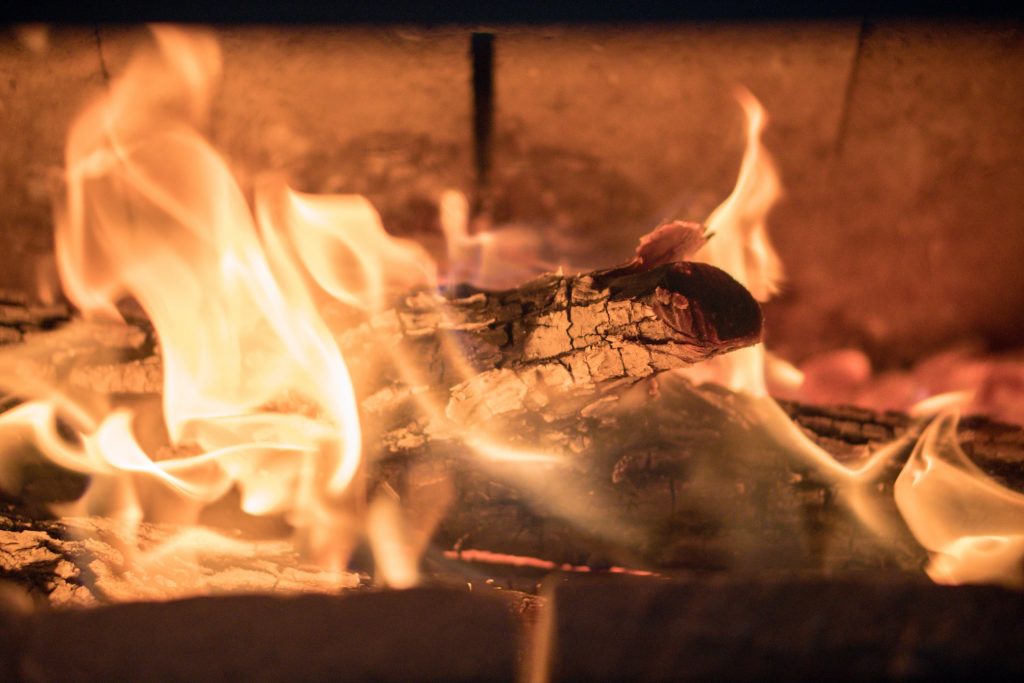
The Difference Between a Gas Stove and a Wood Burner
1 - Atmosphere
When it comes to creating a warm, homey atmosphere, the warmth coming from a wood burner is preferable, especially for people who react well to the crackling sound of fire and scent of wood. It reminds them of the feeling of home.
Meanwhile, a gas stove produces a different type of flame. With quality wood, it can replicate a wood burner and create a realistic glow that can still meet your standards.
2 - Ease of Maintenance
A wood stove drives dirt and smoke due to the firewood it burns, so it will involve daily cleaning. The burner and chimney are also expected to be cleaned and maintained if you want to avoid soot buildup that could lead to a fire or another accident.
With a gas stove, you won’t have to deal with any leftover smoke or ash. Gas stoves appear to be low maintenance because the flame produced doesn’t involve burning wood, so you don’t have to worry about regular cleaning. You can instead opt for a yearly disinfecting of the gas stove to improve its lifespan.
3 - Energy Conservation Abilities
A wood burning stove still uses a traditional setup to initiate fire successfully. On the other hand, a gas stove uses an alternative to creating energy, gas being the most cost-efficient form of energy. So when it comes down to productivity, a gas fire is capable of lowering your electricity bills and still be able to light up the whole room.
4 - Safety
The safety of your household is crucial when it comes to operating appliances that make use of electricity and fire. Compared to a wood burner, a gas stove has no presence of fumes and toxic particles in the air, nor are there sparks and real flame. This means it edges ahead of wood stoves in terms of safety, especially when you have children and pets around you.
5 - Effectiveness
A gas stove allows you to produce controlled heat in an instant with just a push of a few buttons. A wood burning stove, however, will take a while to start as you have to burn enough logs to achieve your desired temperature.
6 - Affordability
A wood burner and a gas stove offer accessibility to properly heat your home. They also have a flue system where the gas comes out either through the chimney or exhaust. You can place both stoves anywhere you want as long as they meet the requirements.
If you want to install a gas stove, the main advantages you’ll be enjoying are its practicality and affordability. Aside from that, gas stoves allow you to make adjustments to the heat, as opposed to a wood burner stove that doesn’t have that kind of automatic feature.
Conclusion
Choosing the perfect stove to fit your lovely home depends on what you need. Your decision will be influenced by the factors above, which will guide you to purchase an appropriate range you know your family will benefit from for the years to come.
Are you in need of a stove installation in Scotland? Stove Scotland offers professional and reliable services, guaranteeing your stoves and fires are handled with great care. We will work with you to ensure that your stove will perfectly fit the style and dimensions of your room.
Don’t have a Chimney? That’s not a problem–we can fit your stove anywhere. Get in touch with us today to find out more!
4 Great Benefits to a Multi-Fuel or Wood-Burning Stove
While many homes and commercial establishments are decked out with gas or electric stoves, there are still some out there using older technology. Multi-fuel stoves and wood burning stoves are enjoying a resurgence in restaurants, especially, as more and more hope to achieve authenticity in their recreation of traditional dishes.
Multi-fuel and wood-burning stoves are not relegated to just restaurants and professionals. They could fit quite well in your home, offering a unique experience in addition to serving a whole set of purposes.
In this article, we are going to talk about multi-fuel and wood burning stoves—how they work, what their differences are, and their benefits to your home. Read on to learn more!
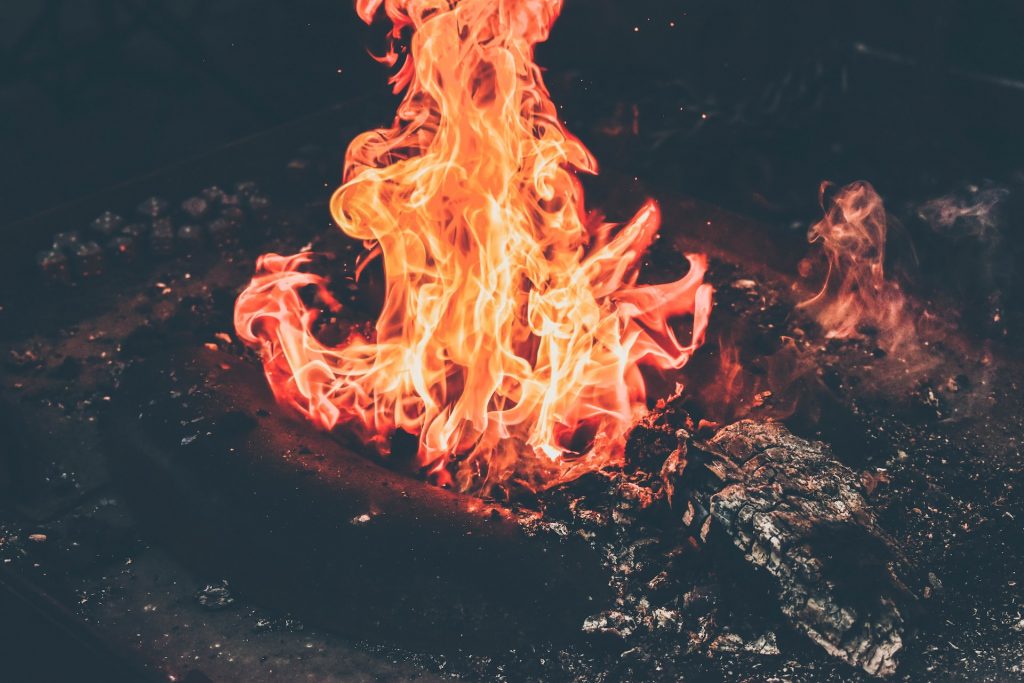
The differences
Both stoves generally have a solid encased chamber where fires are started, with a pipework system that connects to a chimney for the gases to escape through. The air volume that passes through this pipework system can be controlled.
Wood-burning stoves or wood burners use logs of wood on a pile of ash. These are not suitable for coal and peat fuels, as opposed to their multi-fuel siblings. This is the main difference between multi-fuel stoves and wood burning stoves.
In addition to this, multi-fuel stoves contain a grate and removable ash pan to help with the burning of coals.
The benefits
1. The offer a quaint and rustic look to your home
One of the chief benefits of both of these stoves is that they are both aesthetically pleasing rustic pieces that can become an excellent focal point in your space. Aside from that, they can serve the function of providing warmth on cold nights as well as cooking your food.
2. They can save you money
Most heating methods these days rely on electricity and gas, which can be costly depending on where you live and a few other factors. As these stoves execute the double function of cooking and warming, you can save money that you would have spent on two or more different appliances. Aside from that, these stoves are also better at warming than chimneys, as they allow much less heat to escape through the chute.
3. They can be better for the environment
Wood is considered a carbon-neutral form of fuel, as the tree from which the wood originates is likely to have absorbed more carbon from the environment than will be burnt in a single go. Multi-fuel stoves can also benefit from smokeless coal, if that is an issue in your locality. Smokeless coal also creates less ash, making it cleaner than regular coal.
4. They open up plenty of other options
Not only do you have access to a wider array of fuels, but the different types of wood you can use can bring out certain flavors in the food you prepare.
Another thing to note is that such stoves are convertible into boilers, which can be used to warm larger spaces and the rest of your home if need be, as it can be connected to your central heating system.
In conclusion
Multi-fuel stoves and wood burning stoves, even though they seem like primitive technologies, actually provide all the same advantages and more, as they are an ecological alternative to much of the appliances we keep in our home. Not only that, but they are a comfortable and beautiful centerpiece in whatever they’re in, often becoming a point of conversation.
If you’re looking for a supplier of multi-fuel stoves and wood burning stoves in the UK, send us at Stove Scotland a message. We are a family-owned and operated business, and we can supply, install, and maintain these wonderful stoves.
3 Tips When Purchasing Wood for Your Wood-Burning Stove
No matter how much you invest into your wood stove, it is only as good as the wood it is burning. Many different factors affect the quality of the wood you are using, and you might end up with logs that smoulder slowly or burn up quickly.
In any case, the most important thing to remember when using a wood-burning stove is that the wood you use must be as dry as possible. That way, the logs can burn more efficiently and produce more heat, reducing the amount of wood you need to use.
That said, some people have the option of chopping wood in advance and storing it away. However, for those who do not have that luxury, purchasing wood is perhaps the most viable option. If you fall into the second group and need to go but to buy wood for your stove, here is what you need to consider:
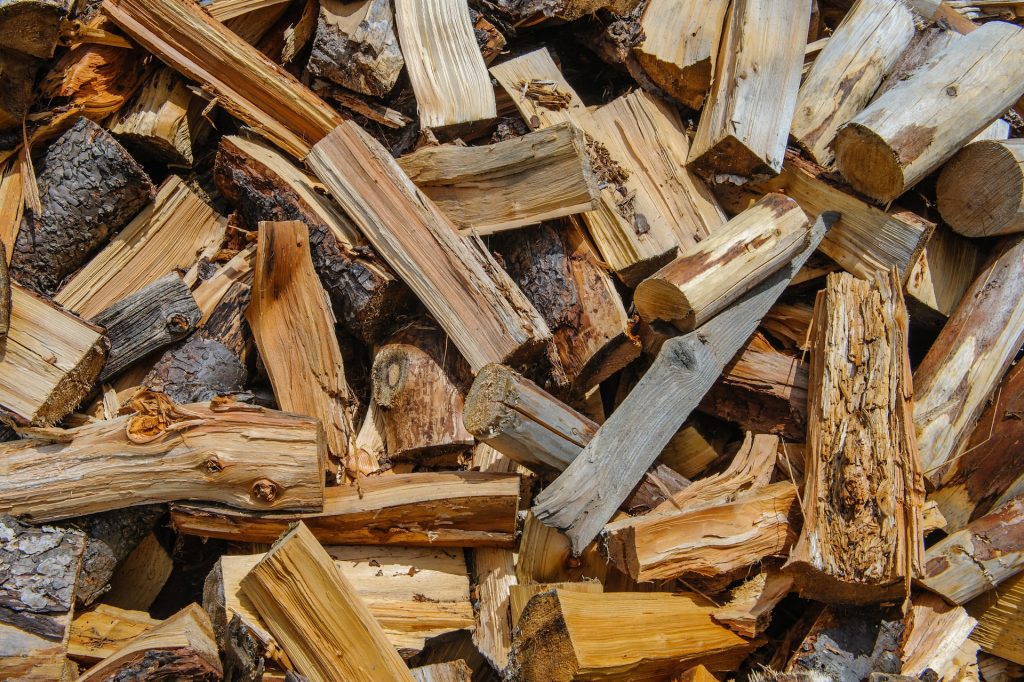
3 Tips When Purchasing Wood for Your Wood-Burning Stove
1. Purchase as much wood as you can
When you buy wood, you should buy enough to last for weeks or even months. That’s because if you buy less and run out, you’ll have to compete with more people to buy wood and probably pay a higher price. Plus, it saves you from having to take multiple trips out into the freezing cold.
With that in mind, purchase as much as you can store in your home. If you do not have much space, you can look for wood suppliers that can continuously supply you with your needs via a subscription.
2. Buy as early as possible
Buying wood well in advance lets you enjoy two advantages: One, you can rest assured that you’ll be ready for the upcoming winter; two, it saves you a lot of money.
When you buy wood early, demand is much lower. Prices are usually much lower compared to in the winter months when people might be fighting over what’s available.
If you want to save as much money as possible, you could purchase damp wood during the spring. This type of wood is much cheaper, and you’ll have plenty of time to dry the logs out before winter finally arrives.
3. Store the wood in a dry environment
The job does not end the moment you buy enough wood. It continues when you have to store the logs away.
In most cases, you will want to stack them on top of each other in a dry place protected by a roof and ensure that air can easily circulate between them. Exposing the logs to heat will also help dry them out, but the real priority is allowing airflow to get rid of excess moisture.
That is why you must stack your logs in such a way that allows for easy air circulation. This ensures moisture levels are kept down and that the growth of mould is kept at bay.
Conclusion
In summary, buy as much wood as you can as early as possible and store them in a dry environment. In doing so, you prepare yourself for the upcoming winter, ensuring that you and your household can sit by the wood-burning stove and enjoy its warmth.
Are you looking for log-burning stoves in Scotland to install in your home? Stoves Scotland can give you the services you need, whether you want us to supply the stove or install it for you. Get in touch with us today and see how we can help.
How to Properly Clean a Woof-Burning Stove - Our Guide
A wood-burning stove can make homes feel warm and cosy, making family bonding more fun and intimate. Aside from that, it can significantly enhance the aesthetic appeal of a room, as it can give off a classic and luxurious appearance.
However, like any other home appliance, log-burning stoves require proper cleaning and maintenance to last long and work efficiently. That is why, as a homeowner, you should learn how to take proper care of one.
With that said, here is a quick guide on how you can effectively clean wood-burning stoves:

For Sooty Stove Glass - How to Properly Clean a Woof-Burning Stove - Our Guide
The glass cover of your log burning store can get sooty if it is not correctly ventilated or moist firewood is used. Soot is not pleasing to the eyes and can make your stove more prone to dirt build-up and damage.
To resolve this problem, you can use either of these two cost-effective solutions:
- Use the ashes for cleaning: Dip a slightly damp cloth in the cold ashes and wipe and rub the inside of the glass cover with it. When doing this, make sure that the glass is cool to avoid shattering.
- Use specialist cleaning products: Buy the appropriate cleaning solution in the market and apply it to the glass as instructed on the label.
For an Overfilled Ashpan - How to Properly Clean a Woof-Burning Stove - Our Guide
Although it is recommended that you empty your ashpan during the summer months to avoid ash and dust getting everywhere, most homeowners keep ash in their ashpan for too long. While a small amount of ash will not be a problem, an overfilled ashpan can affect the airflow to the stove’s grate and can make lighting a fire more challenging.
When cleaning an overfilled ashpan, do not run it under water or wipe it with a damp cloth right away. This is because wet ashes can stick to the ash pan and damage it, making it harder to clean.
Instead, clean out the ash first by discarding it in a safe place. You can stop there, but if you want to clean it thoroughly, make sure to remove as much ash as you can before rinsing the pan with water or any liquid solutions.
For the Exterior of the Log Burner
Most wood-burning stoves are made of cast iron, allowing them to withstand and resist the heat produced by the burning wooden logs. As such, you will need dry cleaning methods for the outside of the burner.
To clean its exterior, dust it with a vacuum cleaner or a stiff brush. Make sure to avoid wiping liquid solutions on it, as doing so can leave streaks that may encourage oxidation.
For a Blocked Flue
The flue is a vital part of log-burning stoves, so thorough cleaning and careful maintenance are needed to address any problem that is present in it. However, attempting to clean it yourself may cause it to break further, especially if you do not have adequate knowledge about it.
To ensure safe and proper maintenance, consider hiring a chimney specialist to resolve any blockages in the flue. Doing so will save you a ton of money, effort, and stress.
Conclusion
Cleaning a wood-burning stove doesn’t require much effort and a big budget. You can do it yourself as long as you know the necessary and proper cleaning tools and techniques. However, if there are blockages in its flue, it would be best to consult a chimney specialist to address the problem.
In case you are looking for reliable and expert stove fitters in Scotland, get in touch with us today. Apart from installing wood-burning stoves, we also supply high-quality burners and offer professional maintenance services.
Steps to Successfully Light Your Stove for Beginners
Buying new appliances for your home is always an exciting feat. And when it comes to picking the right stove for your kitchen, going through its manual and reading through the instructions to properly turn it on always turns out to be a fuss.
That’s why to make it easier for you, we’ve provided the necessary steps you should take to operate your stove and light it up for the first time. Read on below.
Before anything else, make sure you first identify what kind of stove you have. If you’ve purchased a woodburning stove, you should make sure it’s connected to the hot water before lighting it up. Because if you don’t, it might cause your stove to malfunction which will just further ruin the boiler.
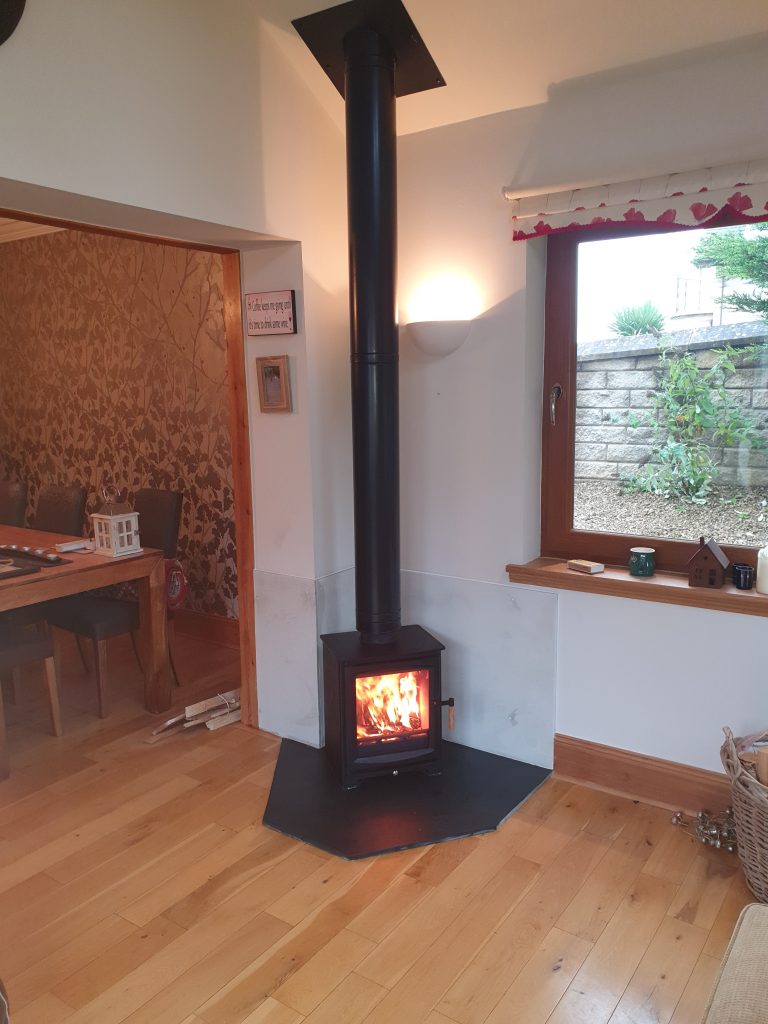
Steps to Successfully Light Your Stove for Beginners
- The first step should be focused on ensuring your stove’s flue and air controls aren’t blocked. Opening them allows smoke to exit through them later on.
- Gather wood and newspaper and use a match or lighter to turn your stove on. If you’re dealing with a multi fuel stove, slowly adding wood and fuel to it will increase the strength of the flame.
- Once you’ve lit the fire, make sure to keep the stove’s door narrowly open so the flue can act as a guide during the lighting process. This will also keep the condensation from building up inside the glass. When you’ve finally gotten the fire going, slowly add more fuel to keep it steady and stable.
- You can now close the stove door and allow the heat to increase at its own pace. Since you’re dealing with a brand new stove, make it a habit to keep the temperature on low at least for a couple of days. This is so the stove’s glue and paint will settle completely.
- If in some cases you start to notice a pungent smell coming out of your stove, you should keep your windows wide open to keep it out of the room.
- You should never keep your stove on while your fire doors are ajar because it could end up deforming your door. You can only do so if the manufacturer of the stove states otherwise.
If you find yourself handling a pellet stove that has an automatic starter, you don’t have to do the whole process above. Instead, all you have to do is press a certain button to ignite the fire. This is because the stove uses electricity to light the fire. On the other hand, a manual pellet stove will require the use of matchsticks and ignition gel to light your stove.
Take note that woodburning stoves will need plumbing, woodburning cookers will need a quick inspection of the cooker itself, and pellet stoves make use of electricity supply to work.
For all kinds of stoves, it’s necessary to keep them in low heat for the next few days once you’ve purchased them and figured out how to turn them on. Always make sure to ventilate the room properly to avoid accidents and health issues from arising.
You should also make sure to follow the steps provided as well as basic safety precautions like avoiding touching the stove when it’s hot or the careless mishandling of fire. This will ensure using your stove at its optimum potential.
Conclusion
When buying a new stove, taking careful steps to ensure the safety of you and your family is important. This will not only lead you to avoid accidents and potential harm, but it will also encourage you to keep your stove well-maintained for the years to come.
Stove Scotland offers a variety of stoves, including multi fuel stoves in Scotland. If you’re looking for reliable and affordable products, get in touch with us! We’ve got you covered.
What You Need to Remember Before Installing a Wood Burning Stove
Wood burning stoves are quickly gaining much attention and have been the choice of homeowners for effective heating systems for their homes. A lot of homeowners are turning to wood burning stoves due to its benefits. It’s a great alternative heating system and it is also a better choice for the environment.
Installing a wood burning stove to your home isn’t easy. You need to know if the requirements of having one installed fits into your home and your lifestyle. Here’s a list of things you need to consider before you buying and installing a wood burning stove:
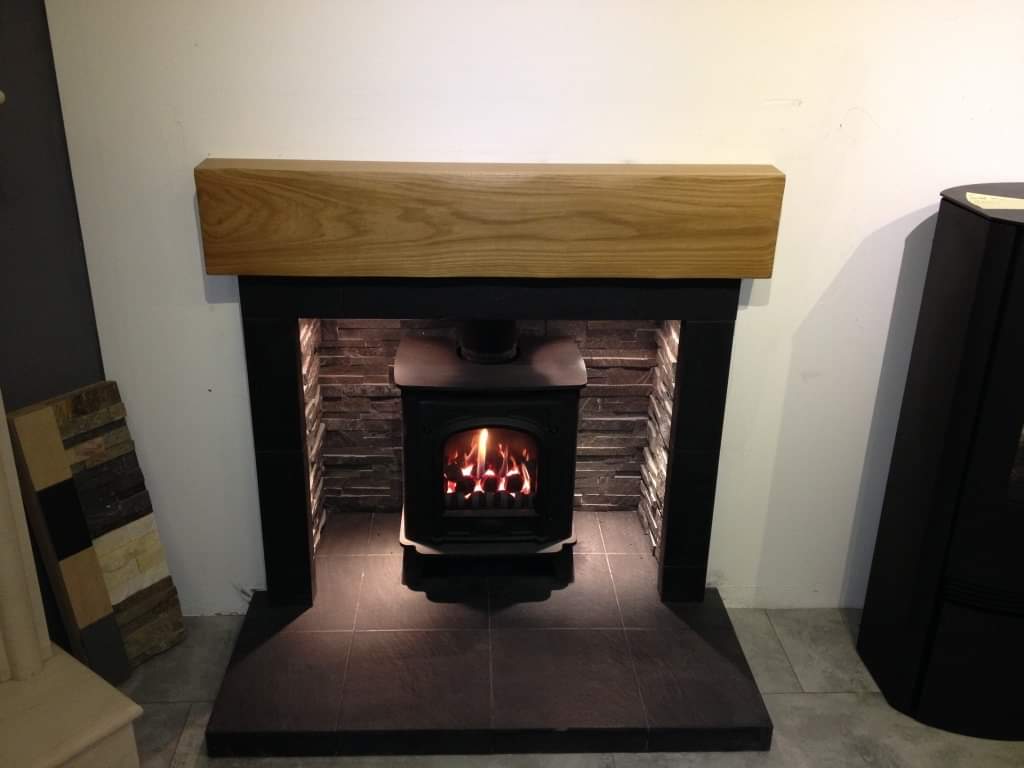
Do you have the right space for it?
There are different sizes of wood burning stoves that would fit the floor-plan of your home. Consider finding a space where it can be installed comfortably and won’t cause any disruptions in your living space. The size also matters because you want your wood burning stove to be able to heat the specific room it is in properly.
Installing a wood burning stove if you already have a chimney isn’t too difficult, but not having one shouldn’t be a problem. Your chosen installation team will help you design a new chimney, create a flue up to the roof and install your new wood burning stove.
The same thing goes if you already have a fireplace in your homes; the installation process for your stove would be easy. You can even have it customised to be the perfect centerpiece for your home.
What kind of stove do you want?
There are two types of stoves you have to choose from: a dry stove or a wet stove. What dry stove does is provide heat directly to the room it is installed. Wet stoves, on the other hand, have boilers attached to their water tanks. The great thing about wet stoves is that it can be connected to solar power. This means it will not only heat your household’s water supply but provide heating and solar power as well.
Time to get your creative juices flowing
Now that you know you have enough space for a wood burning stove for your home and what kind fits your lifestyle, it’s time to customise and design the perfect one for your home! This is usually the most exciting part of your home project. You get to choose from different styles, finishings, materials, and colors. By doing the right research and finding the right materials to work with, you’ll have a quality wood burning stove that would do its job well and still be stylish.
Hire a great team
Installing a wood burning stove is no easy feat. There is a lot to consider before installation and only a reputable and expert team of wood burner stove installation companies will be able to do an amazing job for you.
Hiring an expert team to do this job will be more cost-efficient and a great investment for your home. When you invest in quality work, rest assured your wood burning stove will last for years.
Conclusion
Wood burning stoves aren’t only visually a great addition to your home but it also keeps you and your family warm and cozy. Working with a team of specialists that will help you install your wood burning stove and help maintain upkeep will help you get the most of your investment. Don’t forget to consider these key features when you start your next home project!
Stoves Scotland is a family-owned company that specialises in fireplace and wood burning stove installations in Scotland. We offer installation services and maintenance for our clients. Ask for a quote today!
4 Reasons You Want to Install a Wood-Burning Stove
When winter approaches, many turn to install wood-burning stove or furnaces to ensure that their home stays warm and cosy to live in. That said, there are many types of furnaces you can use to heat up your residence—some which utilize gas and electricity, while others that use pellets of compressed biomass.
If you do not have a stove for your home yet, then you might be wondering which one you should pick. Of all the options available, some of the best stoves available are the traditional wood-burning stove.
To emphasize that point, here are four reasons why a wood-burning stove is perfect for your home:
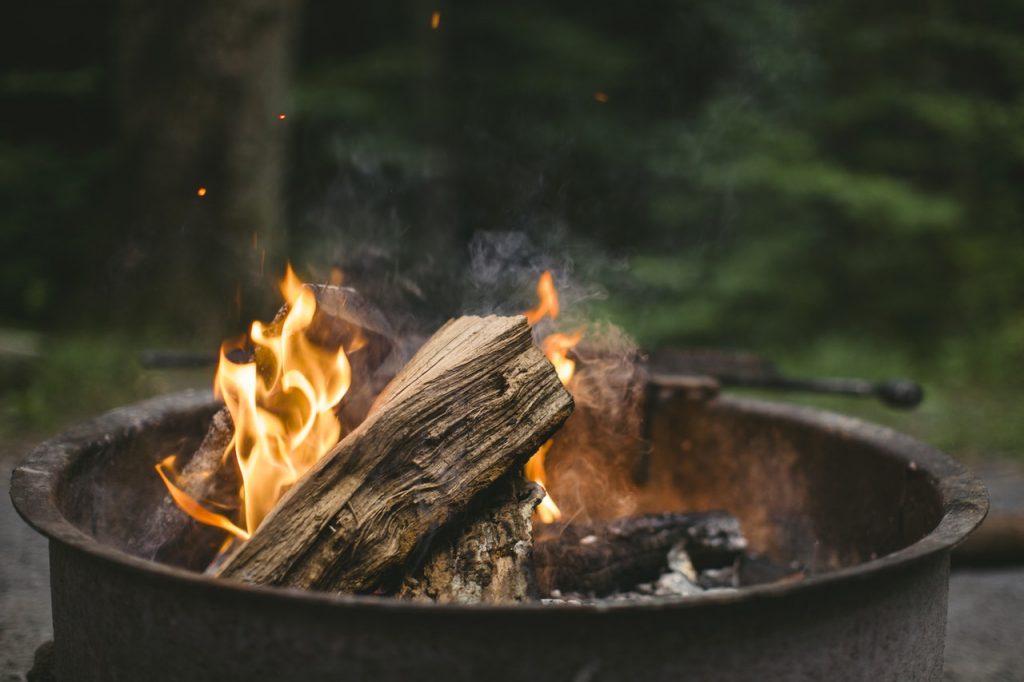
1. It is effective and efficient to Install Wood-Burning Stove
The best thing about wood-burning stoves is that it is an extremely efficient and effective heating appliance. Compared to other options which show efficiency levels of up to 25% (only a quarter of the burnt substance is turned into heat) the wood-burning stove has shown a burning efficiency of up to 80%. Plus, a wood-burning stove has a high output level, meaning that it can effectively heat up just about any room in a short amount of time.
2. It looks aesthetically pleasing
Even if your stove simply sits in the middle of your home during warm summer months without use, it can still act as a great centrepiece to any room. That is because the aesthetics of a wood-burning furnace are formed to be stylish, thus exhibiting some personality and character to any space it adorns.
From traditional to modern designs, wood-burning stoves of all types and styles are available. Whatever the theme of your home is, there is a stove perfect for your tastes.
3. It saves a lot of money
This point directly coincides with our first point, where wood-burning stoves are one of the most efficient sources of heating. As you would need less wood to heat a room, you are thereby using fewer materials—which translate to fewer costs for heating your home. What makes that even better, however, is that unlike its electrical or gas counterparts, the lumber used to fuel a wood-burning stove is extremely affordable.
With that said, you might be worried that a wood-burning stove will be costly to purchase and install. Even if that were true, the money you would have saved would cover the cost of the furnace in no time.
4. It is reliable and eco-friendly
Electricity now is much more reliable than it has ever been. During winter months, however, the possibility of having electricity cut off is much higher—meaning that you may occasionally experience brownouts and blackouts. If you already have a wood-burning stove in your home, however, then you do not have to worry about a power outage leaving your home in a wintry mess!
At the same time, a wood-burning stove is also incredibly eco-friendly due to it being carbon neutral—meaning it emits just as much CO2 as the trees consume.
Conclusion
We hope that the reasons we have shared with you have convinced you that a wood-burning stove is the best stove for you! However, if you need just a bit more to convince you, ask yourself, what is better than having friends or family gather over for a cup of hot chocolate? Having them gather together and enjoying the drink in front of a wood-burning stove!
The atmosphere that a wood-burning stove can emit is one that's extremely welcoming and cosy. To add to that, going out with your family and friends to look for wood fuel is a fun adventure, and nothing beats coming back home to enjoy the warmth of your efforts.
Stove Scotland offers a myriad of services, from installing wood-burning stoves to maintaining it. If you need to have wood-burning stoves installed in your home in Scotland, then reach out to us today!


